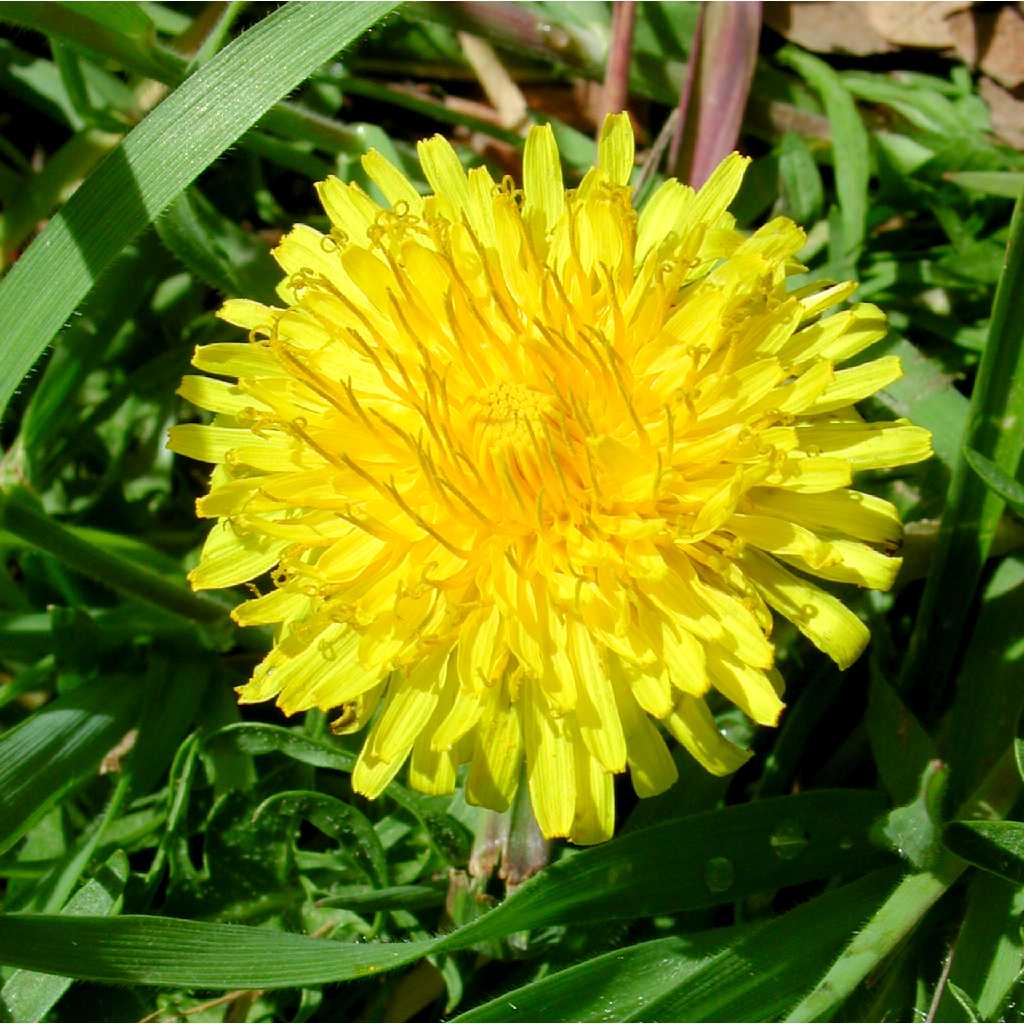Taraxacum
|
Family: Asteraceae |
Perennials, (10-)30-400(-600+ in fruit) cm (sexual or apomictic); taprooted or with branched caudices. Stems (1-10+) erect or ascending, scapiform (terete), simple (hollow), glabrous or villous proximal to heads. Leaves basal (in rosettes, erect or patent to nearly horizontal); petiolate or sessile; blades oblong to obovate or oblanceolate to linear-oblanceolate, runcinate or lyrate (bases cuneate to ± attenuate), margins subentire to dentate or pinnately lobed (apices rounded or obtuse to acute or acuminate, faces glabrous or glabrate to sparsely villous, pilose, or villosulous). Heads borne singly. Calyculi persistent, of (6-)8-18(-20) broadly ovate to lanceolate bractlets in (1-)2-3 series, distinct (appressed before flowering, recurved to spreading or reflexed in fruit), unequal (shorter than phyllaries, margins scarious, ciliate or not, apices corniculate, callous, or neither). Involucres campanulate to cylindro-campanulate or urceolate to cylindric, 8-40 mm diam. Phyllaries 7-25 in 2(-3) series, weakly coherent proximally in buds (interlocking folded margins), distinct later, erect (sometimes slightly spreading) in flower, closing at fruit maturation, reflexed at dispersal (exposing globes of cypselae with fully spread pappi), ± equal, herbaceous, glabrous; inner lanceolate to linear-lanceolate, margins scarious, ciliate or not, apices acuminate, sometimes corniculate, callous, or flat. Receptacles ± flat, epaleate. Florets (15-)20-150; corollas yellow, sometimes greenish, rarely cream or pale pink [white], often purplish- or gray-striped abaxially (anthers yellow or yellow-cream, sometimes darker; styles yellow or greenish, sometimes grayish to blackish). Cypselae straw-colored to olive, brown, or red to pale or dark gray, bodies oblanceoloid to obovoid, ± flattened (distally ± swollen, forming discrete, conic, or terete 'cones' supporting beaks [without cones]), beaked [beakless], ribs 4-12(-15), faces muricate (at least distally) [nearly smooth], glabrous; pappi persistent, of 50-105+ distinct, white to cream-colored or yellowish to sordid, equal, barbellulate bristles in 1 series. x = 8. The type of the genus, Taraxacum officinale, is conserved. This name is linked to the (very general) description of Leontodon taraxacum Linnaeus. A. J. Richards (1985) typified T. officinale, via L. taraxacum, on a specimen that is apparently referable to T. campylodes Haglund, a microspecies of sect. Crocea restricted to Lapland, which thus became the basis of sect. Taraxacum. J. Kirschner and J. Stepánek (1987) underlined that this typification of T. officinale does not reflect usage of the name, which raises considerable ambiguity as to its application, because Richards essentially defined a new content for it. The species usually referred to as T. officinale must now be referred to sect. Ruderalia (Kirschner and Stepánek); no name was proposed that would correspond closely with the species currently called T. officinale. A proposal to conserve the name T. officinale with a neotype that would preserve its common usage for this widespread entity has been suggested; this has yet to be discussed fully. Taraxacum Zinn (1757) (= Leontodon Linnaeus) is a rejected name. The genus has been monographed by H. Handel-Mazzetti (1907) and by R. Doll (1974). Infrageneric nomenclature has recently been reviewed by A. J. Richards (1985) and by J. Kirschner and J. Stepánek (1987, 1997). The European species were treated by Richards and P. D. Sell (1973) and much work has been done since; there is no overall treatment for Asia; Russian authors have covered Siberia. The number of species in the genus depends on the disposition of agamic microspecies within species complexes, which varies greatly among authors, particularly in Europe [e.g., A. A. Dudman and Richards (1997) recognized 105 species for Great Britain and Ireland]. North American Taraxacum, particularly in the boreal and arctic zones, has been investigated by numerous researchers, many of whom incorporated new taxa described by H. Dahlstedt (1906); only works touching North America north of Mexico are mentioned here. Obviously, Scandinavian and Russian works also were significant (e.g., Dahlstedt; Doll 1977; M. L. Fernald 1933; E. L. Greene 1901b; G. Haglund 1943, 1946, 1948, 1949; M. P. Porsild 1930; P. A. Rydberg 1901), but often in a manner limited geographically or taxonomically, and no complete review exists. Most often, the taxonomy of the genus has been presented within the context of floras (e Fls all ligulate and perfect, yellow, mostly numerous; invol bracts biseriate, the outer usually shorter than the inner and often reflexed; achenes columnar or thickly fusiform, terete or 4-5-angled, longitudinally sulcate or ribbed, ordinarily muricate or tuberculate at least above, commonly topped by a smooth, conic or pyramidal cusp that tapers to a slender beak, or rarely beakless; pappus of numerous white capillary bristles; taprooted, lactiferous, perennial, scapose herbs, the lvs all basal and rosulate, entire to pinnatifid or subbipinnatifid. 60, mostly N. Temp. Spp. confluent through polyploidy and apomixis. Taxonomy and nomenclature in utter confusion. We here define spp. broadly and follow traditional nomenclature. Gleason, Henry A. & Cronquist, Arthur J. 1991. Manual of vascular plants of northeastern United States and adjacent Canada. lxxv + 910 pp. ©The New York Botanical Garden. All rights reserved. Used by permission. |

